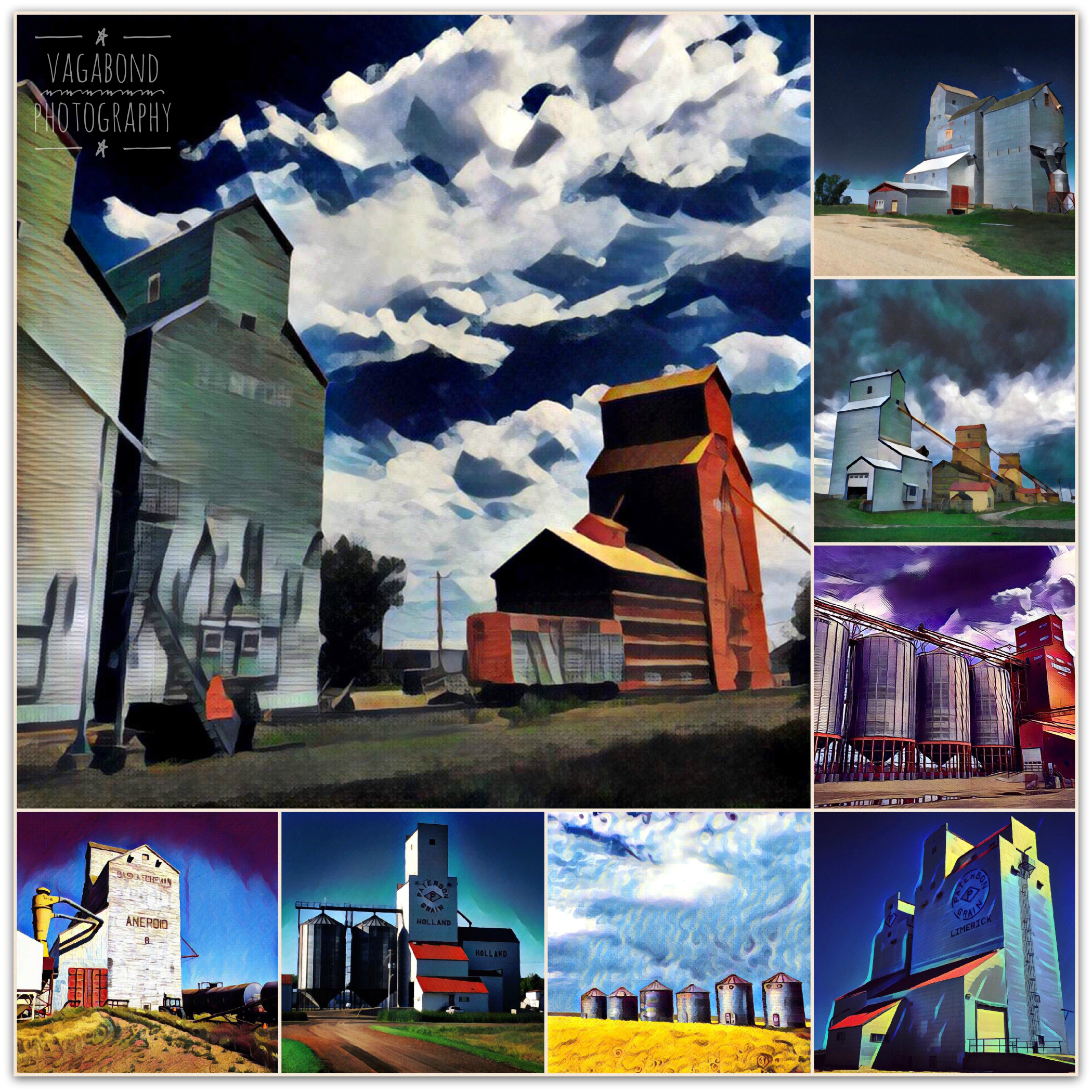Twice in my life I have had the great fortune to travel across Canada’s vast prairies, once by train, and again this summer by pick up truck. Both times I was struck by how the often flat landscape could be punctuated by “Prairie Sentinels,” the grain elevators that tell the world, a town is here. Or was here, as the march of progress and time has witnessed the disappearance of these iconic structures from the Canadian prairie landscape.
As a farmer’s daughter, I find myself drawn to these “Prairie Cathedrals”, understanding that each has a story to tell about the past, and the farmers who traveled to them with wagons filled with hope for the summer’s crop. When doing research for this post, I came across a brilliant post by an elementary teacher in Alberta, Jennifer George, who describes an inquiry she framed with her students around the disappearance of grain elevators in her province. She thoughtfully helped her students generate probing questions about their importance to Alberta’s farming heritage, to community life, and about the important yet challenging notions of change and progress. You can find her full post here and I recommend it to anyone curious about the role grain elevators have played in Canada’s agricultural story on our prairies. In fact, the title of today’s post originated from a story written by a student in the voice of a traditional wooden elevator. Spencer writes:
Keep the legacy of the wooden grain elevator alive so that we the children can remember.”
I especially love Spencer’s notion that “history is a second ago.” Out of the minds and mouths of children!!
I also appreciated learning more about the history of grain elevators through The Encyclopedia of Saskatchewan, The Canadian Encyclopedia, as well as through a pair of intrepid travel bloggers, Chris and Connie, who write “Off The Beaten Path.” These thoughtful sources share interesting facts such as how and why the grain elevators you still see are painted different colours (identifying elevator ownership), why they were built, how their shape mapped onto their purpose, and why they are disappearing from our landscape with each passing year (fire, and the growth of large, corporate farms primarily). I was also fascinated to learn that in 1923, famous French architect and designer, Le Corbusier, announced to the world that the humble grain elevator was one of “the first fruits of the new age”, where form follows function.
I took the photos you see above of a variety of elevators that dotted the landscape as I drove across the prairies this summer. I found them standing tall along the railroad tracks in towns, villages and hamlets like Treherne, Manitoba, Pangman, Saskatchewan, Limerick Saskatchewan, Aneroid Saskatchewan, Mossleigh Alberta, Vulcan Alberta and Nanton Alberta. I took many photos along the way and you can see my original photos here. For the photo collage above, I used a fun app called Prisma that transposed the elevators into tiny, square pieces of artwork that best match how my memory now sees these iconic structures that have served our farming communities so well for so long. As Spencer says “I show people the way home.”



 Hi, I’m Patti, wonderer, wanderer and photographer. During the week I’m a marketer in the publishing industry and on weekends I take to the road to explore this beautiful planet we live on.
Hi, I’m Patti, wonderer, wanderer and photographer. During the week I’m a marketer in the publishing industry and on weekends I take to the road to explore this beautiful planet we live on. 